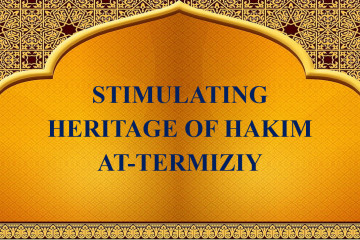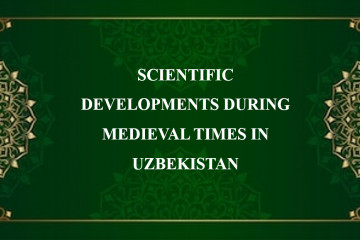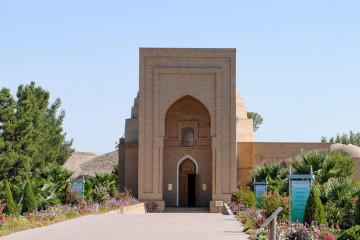
IMAM AT-TERMIZI (824-892)
IMAM AT-TERMIZI
His full name was Muhammad ibn Isa ibn Savra ibn Musa ibn az-Zahhaq Abu Isa as-Sullamiaz-Zariyr al-Bughi at-Termizi. He was born in 209/824 in the village called Bugh (now it is in the territory of Sherabad district of Surkhandarya region) not far from Termez in a middle-class family. A famous Central Asian historian Abu Sa’dAbdulkarim as-Sam’ani (1113-1167) writes that at-Termizi died in the village called Bugh, so his penname “Bughi” was directly connected with it. At the end of his life, he went blind and therefore he had the penname az-Zariyr (blind). Nevertheless, he was popular among people as “at-Termizi” because his birthplace was at the administrative territory of the city Termez and his whole life and activities were closely connected with Termiz.
Imam at-Termizi also wrote a book titled as “Al-Ilal fi-l-Hadith” (Shortcomings and misunderstanding in Hadiths). It included two independent volumes. One of them was titled as “Al-Ilal al-kabir” or “Al-Mufrad”. However, this book is supposed by some scholars not to have reached us. But the scientist NuriddinAtar, who wrote a book about at-Termizi’s life and career, informed in his book published in 1988 in Beirut that he had seen a copy of “Al-Ilal al-kabir” in one of the libraries of Turkey rich in original manuscripts and got a microfilm copy of that book and used its information in his book about the life and career of at-Termizi. He pointed out that in this version the book was not divided into chapters and another specialist in the history of Hadiths Abu al-Valid al-Qazi divided it into corresponding chapters and a special chapter at the end of the book was devoted to the roviys or interpreters of Hadiths.

🌐Imom Termiziy xalqaro ilmiy-tadqiqot markazi Matbuot xizmati
The second part of “Al-Ilal” was titled as “Al-Ilal as-Saghir” and because of direct connection to the author’s “Al-Jami as-Sahih” it was given as a supplement (conclusion) to the book. The word “Hal” in Arabic denotes “a shortcoming, misunderstanding, misinterpretation, lack of intelligence, misfortune”, etc. So, this word is used to show the shortcomings, misinterpretations and defects of Hadiths chosen by the roviys or interpreters. As has been mentioned above, the notion “Hal” makes a great importance as the main aim of the investigations is that in the books of the Islamic science such misgivings as shortcoming, misunderstanding, misinterpretation, misfortune should be avoided. The fact that most scholars paid much attention to these “Hals” in the Islamic science shows that this book is appreciated as one that gives rich information about the peculiarities and specific features of the Hadiths included in the books.
Imam at-Termizi wrote about these “Hals” that at the beginning it was not appreciated to show the shortcomings and misinterpretations of the authors and interpreters, as this fact was considered not acceptable because it was often acknowledged as calumny towards the author or interpreter. Later the scholars began to think about the benefits of the society and decided to speak about the shortcomings, misunderstandings, misinterpretations and misfortunes of Hadiths openly. Both in Iraq and Khorasan one could not find a better expert in the fields of “Hals” and history than Imam Muhammad ibn Ismail al-Bukhari.
Such authors as Imam al-Bukhari’s teacher Ali ibn Abdullah al-Madiyni, Imam Ahmad ibn Hanbal, Imam al-Bukhari, Imam Muslim, Imam at-Termizi, Abu Hatam and others wrote about the characteristic features of Hadiths as their shortcomings, misunderstandings, misinterpretations and misfortunes. Imam at-Termizi’s works about “Hals” was of great importance for these specialists of Hadiths to check and investigate correctness and accuracy of Hadiths.
️ Farrux Saydullaev
International scientific research centre of
Imam Termizi Head of International Relations
 УЗ
УЗ
 РУ
РУ
 EN
EN
 العربية
العربية






Оставить комментарий